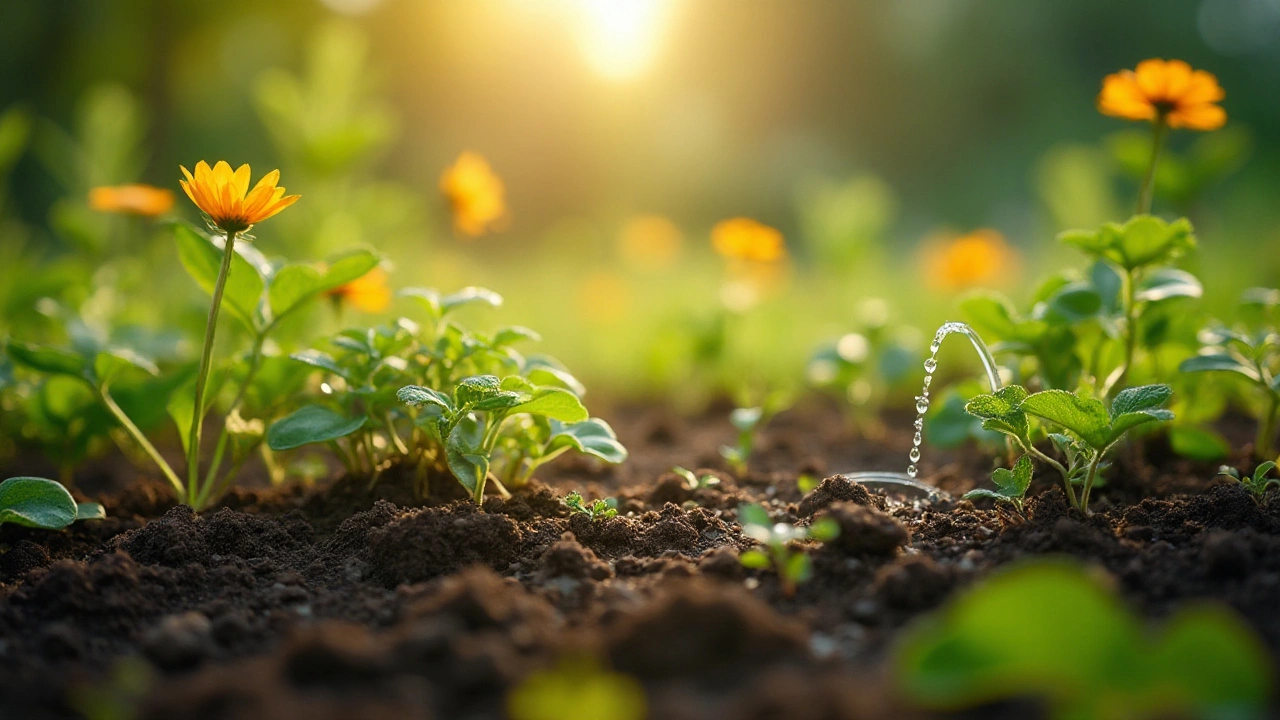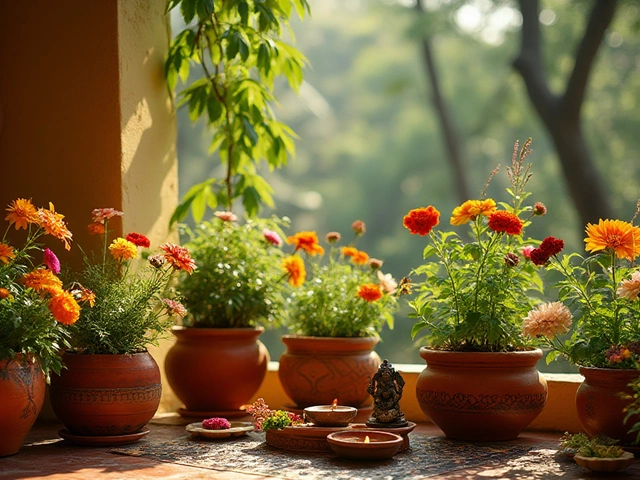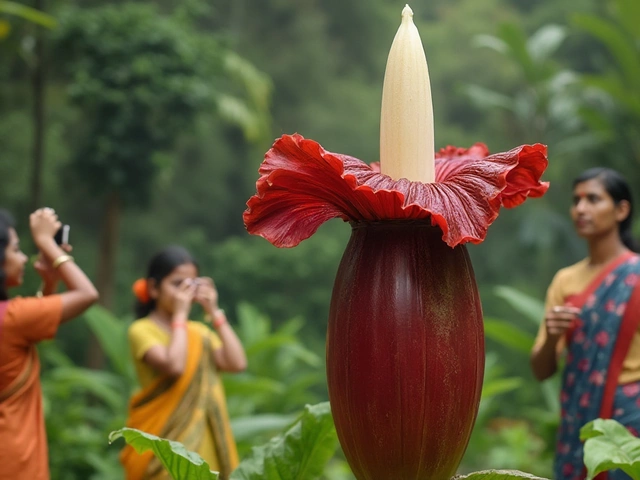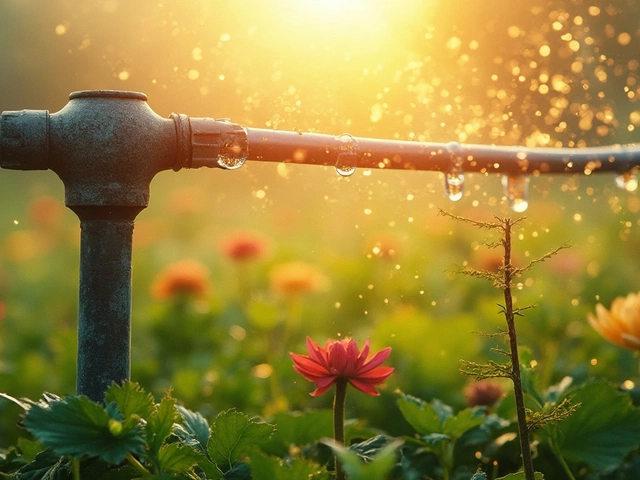Water is a precious resource, and efficient ways to use it in gardening are gaining traction. Enter drip irrigation kits, a solution that delivers water directly to the plant's root zone, minimizing waste and promoting healthier plant growth. But are these systems truly worth the investment for the average gardener?
In this article, we will dive deep into what makes drip irrigation a worthwhile consideration for those looking to optimise their outdoor spaces. We'll look into how these kits work, their benefits, and what you might expect to pay upfront. Moreover, we'll discuss practical tips for their installation and ongoing maintenance to ensure you get the most out of your system.
Whether you're a seasoned green thumb or just starting, understanding these factors can help you decide if a drip irrigation kit is right for your gardening needs.
- Understanding Drip Irrigation
- Benefits of Drip Irrigation Kits
- Initial Costs and Investment
- Installation and Maintenance Tips
- Choosing the Right Kit
- Maximizing Garden Productivity
Understanding Drip Irrigation
Drip irrigation is an innovative method of watering plants that focuses on precision and efficiency. Rather than flooding a garden or delivering water sporadically, this system administers water gradually and directly to the plant's roots through a series of tubes, valves, and emitters. This approach not only minimizes water consumption but also ensures that plants receive the moisture they need without the risk of overwatering, which can lead to disease or root rot. The ingenuity of drip irrigation lies in its ability to simulate the natural moisture patterns that plants have adapted to over time.
The origins of drip irrigation stretch back thousands of years, with some historical accounts indicating that ancient civilizations used clay pots to slowly leak water into the soil. Today, technology has refined the concept, making it accessible for both commercial agriculture and home garden enthusiasts. The modern drip irrigation system became more mainstream in the mid-20th century with the advent of plastic tubing and emitters, which allowed for a highly customizable and efficient means of watering. Drip irrigation kits have now evolved to include timers, filters, and pressure regulators, all designed to fit a wide range of needs and garden sizes.
The adaptability of these systems makes them ideal for various gardening environments, whether you're tending to a flourishing vegetable garden, nurturing delicate flowers, or maintaining a lush lawn. They are particularly suited for arid regions where water conservation is vital, but they also find utility virtually anywhere, given their efficiency. With water-saving capabilities, drip systems can reduce water usage by 30-50% compared to traditional watering methods, as reported by several environmental studies.
One fascinating aspect of drip irrigation is how it supports sustainable gardening practices. By targeting only the necessary areas, it prevents weed growth and reduces soil erosion. This method also minimizes nutrient runoff, which can be detrimental to local ecosystems. Moreover, by conserving water and discouraging weeds, gardeners can save both time and effort, allowing their green thumbs to focus on plant health and growth.
It's worth noting that proper design and routine maintenance of a drip irrigation system are crucial for maximizing its benefits. Ensuring that emitters are regularly checked for clogs and the system is free from leaks can prevent potential headaches. With the right planning and attention to detail, these systems can significantly boost the productivity of a garden, ensuring that each precious drop of water counts.
According to the United States Environmental Protection Agency, "Drip irrigation can reduce water consumption by 20-50%, improving plant growth while saving substantial amounts of water."
Components of a Drip Irrigation System
The components of a drip irrigation system are crafted to work harmoniously to deliver precise watering. They typically include a water source connection, such as a spigot or hose attachment, coupled with a backflow preventer to ensure that water does not reverse flow and contaminate the water supply. A filter is crucial, capturing particles that could clog the emitters. Pressure regulators are included to maintain a consistent water delivery, as variances in water pressure can impact the system's effectiveness.
The heart of the system is the tubing network, which weaves through the garden like arteries, delivering life-sustaining water to each plant. Emitters penetrate the tube at calculated intervals, dripping water at a steady rate directly onto the root zones. With flexible configurations available, these systems can be customized to accommodate any garden layout, whether you are planting rows of vegetables or maintaining a series of ornamental beds. As technology progresses, options for timers and smart controls continue to expand, allowing for seamless integration with other smart garden tools. All these components together make a drip irrigation system a valuable addition to gardens both large and small.
Benefits of Drip Irrigation Kits
Drip irrigation kits are celebrated for their ability to transform gardening with their water-saving technology, providing numerous advantages for both plants and their caretakers. At the heart of a drip irrigation system is its efficient use of water, ensuring that precious resources are not wasted. This is particularly important for regions facing water scarcity, where conserving water can make a significant difference. Rather than watering plant surfaces, drip systems target the root zone, which decreases evaporation and ensures that plants get the moisture they need directly.
Unlike traditional methods such as sprinklers or hoses, which can lead to uneven watering and water wastage due to runoff, drip irrigation delivers water slowly and precisely. This precision not only benefits the environment by conserving water but also boosts plant health by providing a steady, gentle flow of moisture, reducing stress on the plants. A stable moisture environment encourages deeper root growth, resulting in stronger, more robust plants.
Another appealing benefit of drip irrigation kits is the potential for enhanced yields in vegetable gardens. By maintaining optimal soil moisture levels, plants can focus on production rather than recovering from dry spells or overwatering episodes. This consistency often translates to better crop quality and higher yields, which is a substantial advantage for hobby gardeners and commercial growers alike. Efficient gardening becomes a reality with a drip irrigation system, as it aligns with the natural needs of plants for optimal growth and minimizes common issues like soil erosion or nutrient leaching.
The ease of installation and flexibility of drip irrigation kits also play a significant role in their popularity. Many kits come with easily adjustable components that allow gardeners to set up a system tailored to their specific garden layout and plant types. This customization makes it an attractive option for a diverse range of garden styles, from sprawling flower beds to compact vegetable patches. With the ability to adjust the system as the garden evolves, drip irrigation offers a long-term solution that adapts as the landscape changes.
"Drip irrigation can decrease water usage by up to 60% which is substantial not only from an environmental perspective but for cost savings as well." — Global Water Policy Initiative.
The integration of technology in modern drip irrigation kits has further enhanced their practicality and appeal. Automated timers and moisture sensors can be incorporated into the system, allowing for precise watering schedules based on seasonal needs and weather conditions. This automation can drastically reduce the need for manual intervention, freeing up time for gardeners to enjoy their outdoor spaces and focus on other tasks. Drip irrigation kits have truly revolutionized the way we approach watering, offering a sustainable approach that aligns efficiency with the nurturing of beautiful, productive gardens.
Arguably one of the most critical but often overlooked benefits is the role that drip irrigation plays in disease prevention. By keeping foliage dry, these systems discourage the growth of fungal diseases and other pathogens that thrive in damp conditions. This aspect is particularly beneficial for densely planted areas where airflow might be limited. Furthermore, the reduction of weed growth is another advantage, as soil moisture is localized to the root zones, depriving weeds of the water they need to sprout and thrive.
Initial Costs and Investment
For gardeners contemplating the addition of a drip irrigation system, understanding the initial costs and investment is crucial. These systems range widely in price due to component quality, complexity, and coverage area. A basic kit might set you back by around $30 to $50 while advanced systems with timers and larger coverage can exceed $150. It's pivotal to consider what you specifically require for your garden's size and layout before making a purchase. While the upfront cost may seem steep for beginners, the potential water savings and increased efficiency offer substantial long-term savings.
Installation can also be a consideration when budgeting for your drip irrigation kit. For those choosing a do-it-yourself route, costs can be substantially reduced. However, hiring a professional to install the system ensures optimal performance yet adds to the initial expenditure. On average, professional installation fees can range anywhere between $500 to $1,500 depending on the garden complexity and geographical location. An expert setup might seem like an added cost but consider it an investment that ensures the system operates effectively, minimizing potential water wastage due to improper installation.
With advancements in technology, the quality of drip irrigation systems has consistently improved. It’s worth noting these kits often come with warranties or guarantees, providing peace of mind in case of defects. Some studies show that properly installed drip irrigation systems can save up to 50% in water usage compared to traditional sprinklers, a fact underscored by the University of California's research on water conservation in residential areas.
"Drip irrigation provides the efficiency and precision needed as gardeners face increased water-conservation regulations," says Professor Linda White, an expert in sustainable agriculture. These water savings not only off-set initial investments but also contribute to reducing the environmental footprint.
If you're considering applying for rebates or grants, some regions offer financial incentives to promote water-wise gardening practices, which can significantly reduce your net cost. Combining such programs with the natural savings from reduced water use makes drip irrigation an even more attractive option. Over time, these systems can improve garden yield, decrease water bills, and generally create a more sustainable approach to nurturing your green space. Thus, despite the initial outlay, the investments in efficient gardening technology like drip irrigation prove their worth over time.
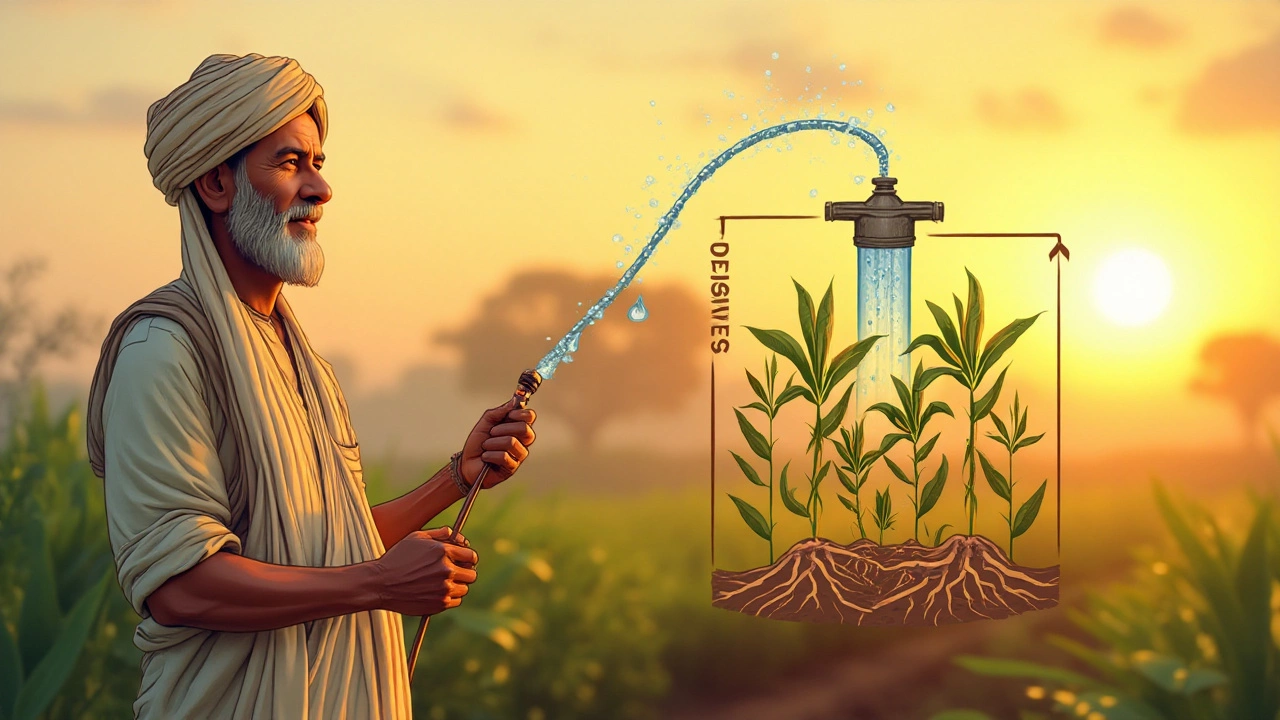
Installation and Maintenance Tips
Setting up a drip irrigation system in your garden may seem like an overwhelming task, but with the right approach, it can transform into a rewarding experience. To begin, ensure you thoroughly survey your garden to determine the appropriate system layout. Each plant's watering needs differ, so it's crucial to consider the types of plants and their placement. Opt for a system that can be easily adjusted as your garden grows or changes seasonally.
When it comes to actual installation, remember the adage 'measure twice, cut once.' Mark out where each drip line will run and how many emitters you'll need, then cut your tubing accordingly. Most kits come with detailed instructions, but you can find numerous resources online, including videos, which offer step-by-step guidance. One advantageous feature of drip systems is that they often require minimal digging, especially if you opt for a surface-level configuration. Mount your timer near a hose bib for easy access and auto-regulation, ensuring consistent and scheduled watering.
As you progress with the setup, routine maintenance should also cross your mind. Check and clean the emitters regularly to ensure they're free of clogs—a common issue caused by dirt or mineral buildup. To help prevent this, consider installing a filter at your system's water source. Inspect the lines for leaks or cracks as temperature changes can cause materials to expand or contract, which might damage the tubing.
Integrating scheduled check-ups into your regular gardening routine will save time and effort in the long run. Always keep an eye out for water pooling around plants, as this could indicate leakage or blockage. Adjust the emitters seasonally; plants need more water during hotter months and less during colder periods. If repairs are necessary, assorted connectors and tape come in handy for quick and effective fixes.
Some enthusiasts and experts believe that automation is key. For instance,
"Automating your garden's irrigation processes allows you to enjoy the fruits of your labor rather than constantly tending to watering needs,"says Gardening Weekly. To that end, using smart systems that can connect to weather apps provides more than just convenience—they also contribute to water conservation by adapting to rainfall and temperature changes.
Maintenance is not just about labor but an art in sustaining your flourishing garden. A well-tuned drip irrigation system ensures that each drop of water hits its target, feeding roots efficiently while minimizing waste. With the right care, these systems offer an excellent return on investment by saving both water and time, making your garden an attractive and sustainable paradise.
Choosing the Right Kit
Investing in the perfect drip irrigation kit can be the difference between thriving plants and less-than-impressive blooms. Given the variety of kits available on the market, it's vital to make an informed decision that suits your garden's specific needs. For starters, consider the size and layout of your garden space. Smaller plots might do well with basic kits, while larger or more complex gardens could necessitate advanced setups with timers and adjustable nozzles. Plant type is another crucial factor; vegetables, flowers, or shrubbery may require different watering techniques and frequency.
Something to ponder when picking your kit is ease of installation. While do-it-yourself enthusiasts might be eager to tackle a project, others might prefer a system that comes with straightforward instructions and perhaps even video tutorials. This factor can significantly decrease the intimidation factor for newer gardeners. Checking online reviews from fellow gardeners can offer personal insights that go beyond the product description and provide honest evaluations of system performance and durability under realistic conditions.
Water pressure is often overlooked but plays a critical role. A low-pressure drip irrigation system may struggle in areas where standard hose pressure is high, leading to inefficient performance or damage. Consider investing in a pressure regulator or choosing a kit that includes one if this might be an issue. Another important aspect is the adaptability and expandability of the system. As your garden grows or your interests change, you'll appreciate a kit that can adjust accordingly without needing a total overhaul.
"The effectiveness of drip irrigation is unmatched when it's tailored to meet the unique needs of the soil and plants it nurtures." - Dr. Marion Ash, Agricultural Scientist
When you evaluate potential kits, factor in climate and weather patterns. If you reside in an area experiencing frequent droughts, a water-saving system that maximizes each drop becomes indispensable. Conversely, in rainy locales, supplementary components like rain sensors might be beneficial. Budget is always a consideration, but it's worth weighing upfront costs against long-term water savings. Top-tier kits might be more expensive initially, yet they promise longevity and efficiency.
Sometimes, the choice boils down to brand reputation and customer support. Opt for companies known for excellent customer service and product warranties, ensuring peace of mind if issues arise. Dive into community forums or local gardening clubs for recommendations tailored to your region. Ultimately, successful drip irrigation relies on a marriage between the kit's capabilities and your dedication to consistent monitoring and adjustments.
Features to Look For
- Pressure regulators to ensure even water flow.
- Compatibility with timers for automated convenience.
- Adaptable emitters for varied plant needs.
- Durability of materials to withstand the elements.
- Clear, comprehensive installation instructions.
As you consider these elements, remember that the perfect kit enhances not just your garden's productivity but also your own experience as a gardener. Armed with knowledge and a little bit of research, selecting the right drip irrigation kit becomes a straightforward task rather than a guessing game.
Maximizing Garden Productivity
Maximizing garden productivity with a drip irrigation system requires a thoughtful approach to both planting and watering schedules. This technique ensures that water efficiency translates into healthier plants and increased yields. The uniform delivery of water helps prevent overwatering or underwatering—common issues with traditional sprinkler systems. By consistently delivering moisture directly to the base of plants, gardeners can ensure that their flora maintain an even level of hydration, promoting optimal growth. The key lies in understanding each plant's requirements and adjusting the drip system accordingly.
Different plants have different water needs, and understanding these is crucial for achieving high productivity. For instance, vegetables such as tomatoes and cucumbers require constant moisture to prevent stress and encourage fruiting, whereas herbs like rosemary and thyme prefer drier soil. By using drip irrigation, you can tailor the water delivery to match individual plant requirements, leading to a more successful garden. To do this effectively, grouping plants with similar water needs can simplify the process and enhance the effectiveness of the water-saving strategy.
The timing of irrigation is also vital for maximizing productivity. Watering during the early morning hours reduces evaporation and ensures plants have ample time to absorb moisture before the sun's intensity peaks. On the flip side, watering late in the evening can lead to fungal growth and mold, which can damage plants and reduce yields. An automated drip irrigation system can be set to water at optimal times, taking one more task off a gardener's to-do list while ensuring precision and consistency.
Moreover, integrating drip irrigation with organic mulching techniques can magnify its impact. Mulch conserves soil moisture by reducing evaporation, maintaining a steady root temperature, and suppressing weeds that compete for water and nutrients. When used in conjunction with a drip system, the mulch allows for more efficient use of water, resulting in flourishing crops. To highlight this, an
experienced gardener once noted, "The combination of mulch with drip irrigation saves about half the water I used before, and my plants have never been healthier."
Another critical aspect is regular maintenance of the drip system. Clogged emitters can disrupt the water flow, leading to dry spots in your garden. Regularly inspecting the emitters to ensure they are free of debris, and replacing them if needed, is vital for maintaining proper flow. Cleaning filters and flushing lines periodically can also prevent buildup of sediments. By staying proactive about maintenance, gardeners can ensure they are consistently getting the best performance from their drip irrigation systems.
